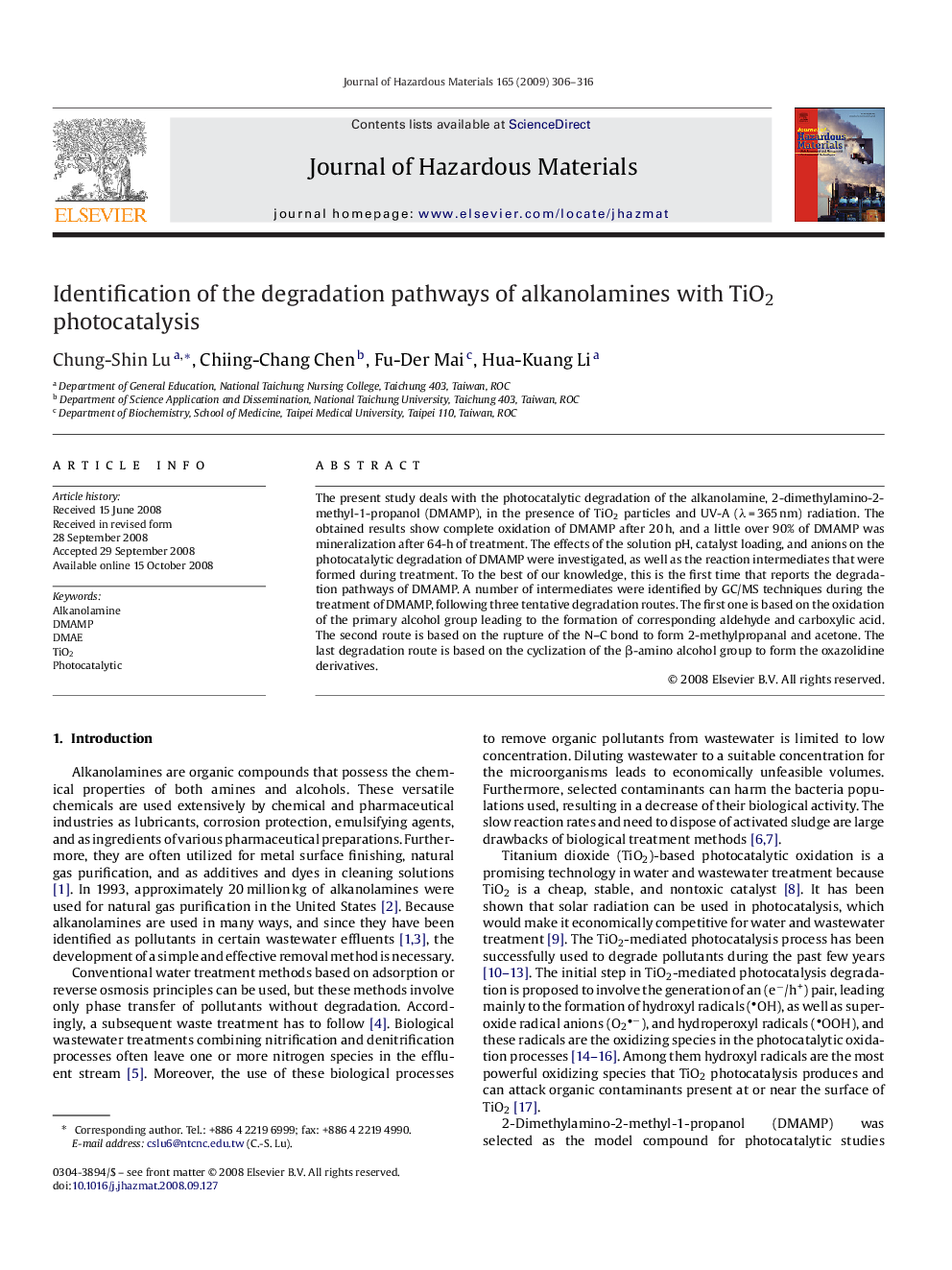| Article ID | Journal | Published Year | Pages | File Type |
|---|---|---|---|---|
| 582279 | Journal of Hazardous Materials | 2009 | 11 Pages |
Abstract
The present study deals with the photocatalytic degradation of the alkanolamine, 2-dimethylamino-2-methyl-1-propanol (DMAMP), in the presence of TiO2 particles and UV-A (λ = 365 nm) radiation. The obtained results show complete oxidation of DMAMP after 20 h, and a little over 90% of DMAMP was mineralization after 64-h of treatment. The effects of the solution pH, catalyst loading, and anions on the photocatalytic degradation of DMAMP were investigated, as well as the reaction intermediates that were formed during treatment. To the best of our knowledge, this is the first time that reports the degradation pathways of DMAMP. A number of intermediates were identified by GC/MS techniques during the treatment of DMAMP, following three tentative degradation routes. The first one is based on the oxidation of the primary alcohol group leading to the formation of corresponding aldehyde and carboxylic acid. The second route is based on the rupture of the N-C bond to form 2-methylpropanal and acetone. The last degradation route is based on the cyclization of the β-amino alcohol group to form the oxazolidine derivatives.
Keywords
Related Topics
Physical Sciences and Engineering
Chemical Engineering
Chemical Health and Safety
Authors
Chung-Shin Lu, Chiing-Chang Chen, Fu-Der Mai, Hua-Kuang Li,
